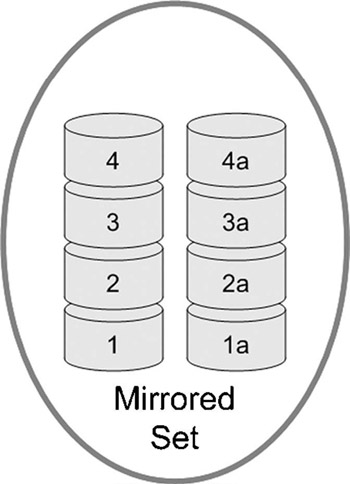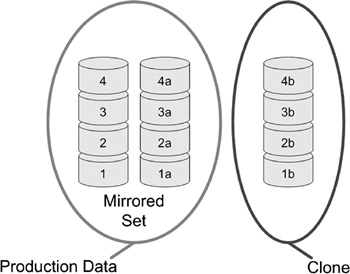9.8 Exchange 2003 and Volume ShadowCopy Services
|
| < Day Day Up > |
|
The time required to back up an Information Store or to recover a lost or damaged Information Store is directly related to the amount of data to be copied and the speed of the backup device. Administrators are always seeking better ways to improve this process, and Storage Area Network hardware vendors have provided technologies—specifically snapshots and clones—that enable more rapid recovery. However, Exchange backups (regardless of whether they are normal backups, snapshots, or clones) require coordination with Exchange software. Exchange has always provided Application Programming Interfaces so that backup utilities could perform Exchange-aware backups. However, until Windows 2003 and Exchange 2003, Microsoft did not provide support for snapshots or clones. The Windows 2003 Volume ShadowCopy Service provides Storage Area Network and software vendors with the Application Programming Interfaces they need to develop complete Exchange-aware snapshot and clone solutions. Windows 2003 does not provide the snapshot and clone solution; it only supplies the Application Programming Interfaces needed to create the solution.
A snapshot is not a complete redundant copy of your Exchange Information Store and therefore does not provide protection for a lost or damaged Information Store. A snapshot is a metadata mapping and is designed to maintain a point-in-time view of the data in the snapshot.
On a disk volume for which you have created a snapshot, when a block of data is changed, the changed block is written to another location that is allocated from free volume pool space. The original (unchanged) block is maintained as part of the snapshot. In this manner, the original blocks that represent the pointin-time snapshot are preserved. As shown in Figure 9.16, the production data set consists of the original unchanged blocks remaining in the disk volume, plus the changed blocks. The point-in-time snapshot consists of the original blocks.

Figure 9.16: Snapshot technology
Clones are based on RAID 0 +1 concepts. RAID 0 +1 is a combination of striping (RAID 0), which interleaves data across multiple disks for better performance, and mirroring (RAID 1), which provides complete duplication of data. For example, Figure 9.17 shows a two-member RAID 0 +1 set that consists of four disks mirrored to four disks.

Figure 9.17: RAID 0 +1 technology
You can create a clone by adding an additional member (or members) to this RAID 0 +1 set and then separating one of the members from the set (Figure 9.18). The separated member (the clone) is a complete standalone copy of the data that you can use to restore an Exchange Information Store.

Figure 9.18: Clone technology
A complete backup/recovery solution using clone technology requires the Windows 2003 Volume ShadowCopy Service support, Storage Area Network hardware technology, and Volume ShadowCopy Service–aware (and Exchange-aware) backup software. The backup procedures will be specific to the hardware/software vendor.
|
| < Day Day Up > |
|
EAN: 2147483647
Pages: 128